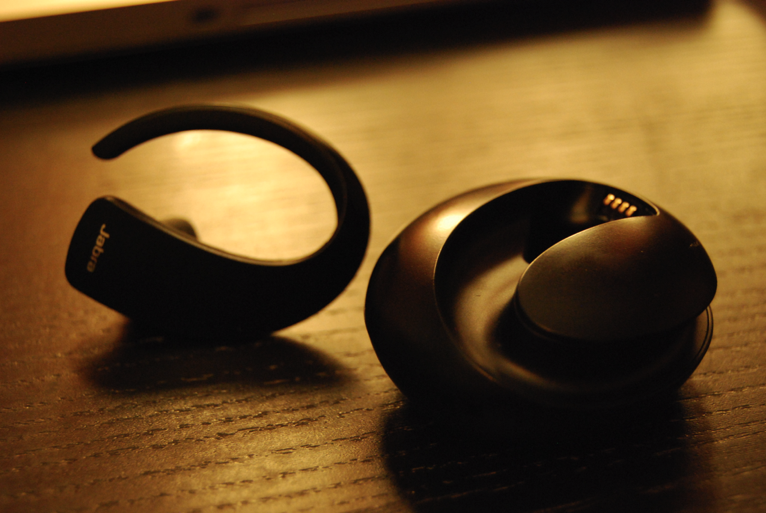Jabra Stone reimagines Bluetooth headsets; 'MacBook Air' of earpieces [review]

The new Jabra Stone reimagines the shape and function of a Bluetooth headset. It's lighter, sleeker and more outwardly innovative than any headset I've seen -- but the "MacBook Air" of earpieces is also woefully short on battery life.
The tiny new Jabra Stone's calling card is its shape, which combines the best of the over-the-ear shape (see: Plantronics Voyager Pro) with the customer service representative-esque on-the-face style (see: Aliph Jawbone Prime). Going a step further, Jabra integrated that shape into a rounded plastic "stone" that serves as a charging repository to charge the headset on the go.
[ZDNet Image Gallery: Jabra Stone]
(You may recall that we first got a peek at the device about a month ago.)
Jabra says you can get up to 8 hours of talk or 12 days standby with the charging stone, but the headset alone can only manage 2 hours by itself. The charging stone packs 3 recharges and indicates with LED lights whether there's enough juice left before you have to plug in.
The shape of the Jabra Stone is a revelation. Combined with its feather weight (it's 0.25 oz.), I found the Stone to be the most comfortable Bluetooth headset I've ever used. It didn't feel like it was "hanging" on or out of my ear, and it didn't unnecessarily plug up my ear because it's not designed to fill the ear canal the way some headset earpieces are.
While the Stone fit me perfectly, its "curl" was too large for a female friend's ear, and was thus unsatisfactory. The Stone is one-size-fits-all and does not come with sized eartips.
The Stone has several neat features, including touch volume control (stroke the curl of the earpiece and the volume will go up or down; it's not automatic). I found it to be an innovative feature, though it didn't react as quickly to my touch as I'd hoped. The headset has "Noise Blackout Extreme" noise canceling technology, the company's strongest iteration, and uses Bluetooth 2.1+EDR to pair with your device.
The Stone supports multipoint auto-connectivity for use with more than one device. The inside edge hides status lights for battery strength and Bluetooth connection status.
You'll also notice that the Stone doesn't have a boom mic. It's a great innovation and takes a little getting used to -- you really are just talking out loud -- and should help people who don't like the look of Bluetooth headsets come into the fold.
The thickest end of the Stone's spiral hides a clicky button that handles answer and end call, voice dialing (depending on the phone used) and, interestingly, music streaming from A2DP-enabled mobile phones -- like other Jabra headsets, but unlike much of the mono competition.
Like Apple's MacBook Air, however, the Stone's slim profile comes at a price: battery life.
Bluetooth headsets are being used for more and more tasks: mobile phones, media players, podcasts at or on the way to work, and oh yeah -- phone calls. While the Stone has competitive battery life with the charging stone at hand, it doesn't by itself -- a problem if you're on a very long conference call or you're listening to music at length.
When the charge is up, you're out of luck.
Some may complain that it's a pain to carry the charging stone around with you, but I found it to be quite useful as a carrying device -- all the better that it's recharging, too. (The Stone is automatically on when it's "undocked" and off when it's "docked" with the charging stone.) In time, I hope the Stone's battery life will match its overall quality.
Finally, sound quality was stellar for the Stone, particularly in quiet environments where calls sounded quite natural. However, on a busy New York street, the noise cancellation couldn't quite block out traffic sounds as well as Bluetooth headsets with boom mics -- the "boom" allows them to get closer to the sound source, i.e. your mouth.
Despite those shortcomings, I feel that the Jabra Stone really does away with a lot of the technical trappings of a typical Bluetooth headset to offer a streamlined device whose quality and subtlety can be appreciated.
The Jabra Stone will be available on Nov. 8 for $129, exclusively at AT&T stores.
